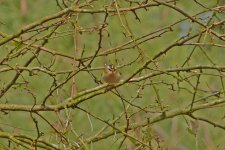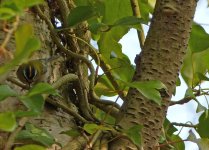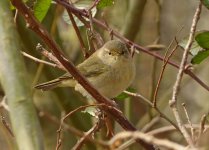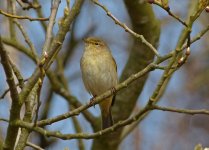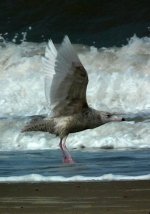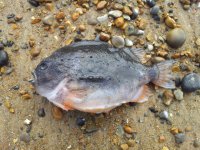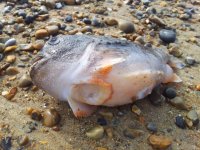RonMac
Well-known member
Puffins
Found this info on Birdguides:
The conservation charity believes severe weather may have led to birds struggling to find food or succumbing to exhaustion, although the exact causes are currently unknown. An RSPB Scotland spokesperson said: "This may be the worst Puffin 'wreck' we have seen for almost half a century. Despite their small stature Puffins are fairly hardy birds, adept at coping with the harsh conditions of life at sea. To hear that so many have been discovered dead is unusual and worrying. We are in close contact with experts from the Centre for Ecology and Hydrology to learn more about what is happening but it appears that the prolonged and unprecedented weather is making life extremely difficult for this species. We are fast approaching the start of the seabird breeding season, where tens of thousands of seabirds return to their colonies to raise their young. The recent events could have an impact on the success of this year's Puffin breeding season, a species already suffering population declines. RSPB Scotland, with the help of volunteers, will be closely monitoring the fortunes of this species and many other seabirds throughout the summer months."
RSPB
Wednesday 27th March 2013
Found this info on Birdguides:
It's feared that the ongoing bad weather may be responsible for the deaths of hundreds of seabirds of the east coast of the UK. RSPB Scotland has received many reports of Puffins, as well as Razorbills and Guillemots, washing up on beaches from Aberdeenshire and Angus to Northumberland.This last week has clearly seen something of a wreck of auks along the N Norfolk coast. At Holme, 4 Puffins have now been found, with 3 discovered yesterday afternoon and a single earlier in the week. Considering the relative scarcity of Puffins at Holme (this is more dead Puffins than I've seen live ones from the Observatory), especially in spring, this is clearly quite a serious and unusual wreck and one that seems to be affecting Puffins disproportionately; other auks along the tideline yesterday afternoon consisted of a 'bridled' Guillemot (thanks for the heads-up Rob), 2 Razorbills and 3 auk sp. All in a suitable condition have been sent of for scientific testing to establish cause of death. Pictures attached (those of a squeamish disposition might be advised to look away!) Unfortunately seawatching has so far failed to produce any live auks. Not how I would have liked to have seen my first Norfolk spring Puffins... Might be worth others doing tideline walks to see how much this is a problem along the rest of the Norfolk coast.
The conservation charity believes severe weather may have led to birds struggling to find food or succumbing to exhaustion, although the exact causes are currently unknown. An RSPB Scotland spokesperson said: "This may be the worst Puffin 'wreck' we have seen for almost half a century. Despite their small stature Puffins are fairly hardy birds, adept at coping with the harsh conditions of life at sea. To hear that so many have been discovered dead is unusual and worrying. We are in close contact with experts from the Centre for Ecology and Hydrology to learn more about what is happening but it appears that the prolonged and unprecedented weather is making life extremely difficult for this species. We are fast approaching the start of the seabird breeding season, where tens of thousands of seabirds return to their colonies to raise their young. The recent events could have an impact on the success of this year's Puffin breeding season, a species already suffering population declines. RSPB Scotland, with the help of volunteers, will be closely monitoring the fortunes of this species and many other seabirds throughout the summer months."
RSPB
Wednesday 27th March 2013




